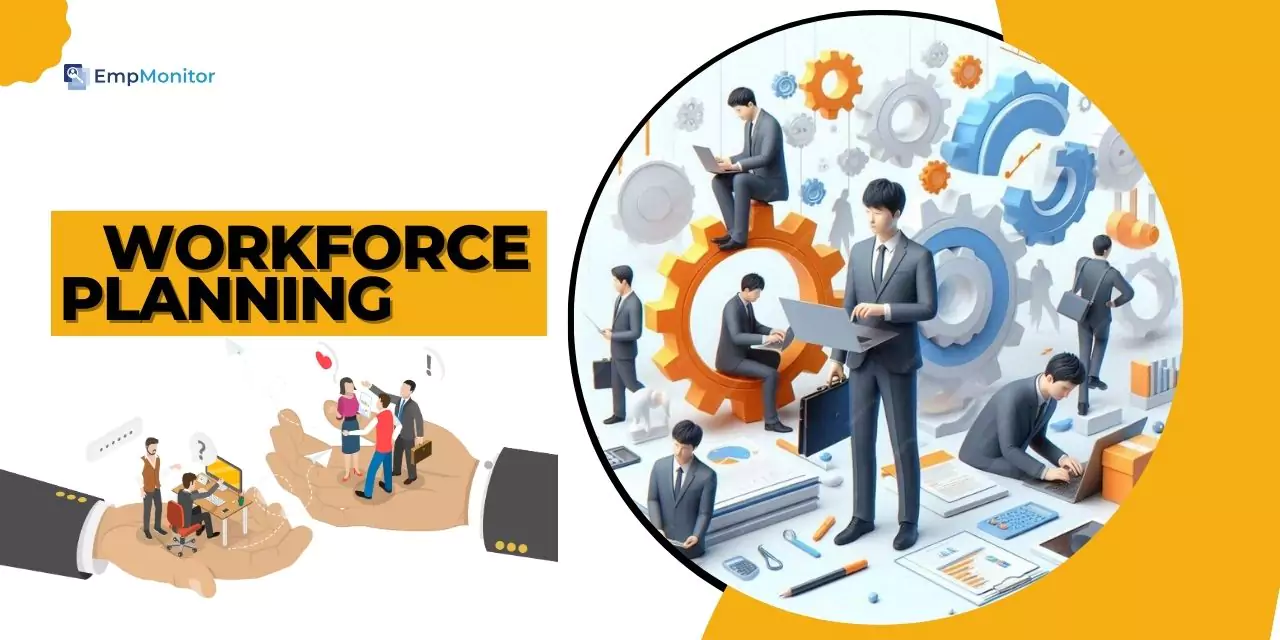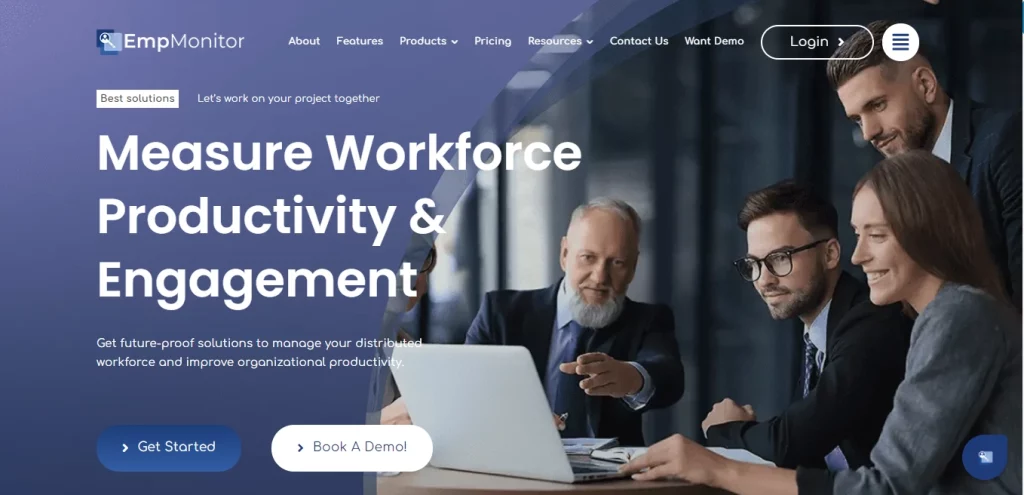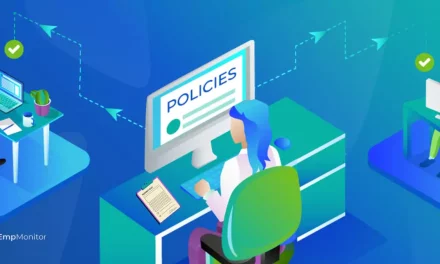Workforce planning is increasingly crucial in today’s dynamic landscape, where economic fluctuations, technological progress, and shifting demographics can swiftly impact businesses. This process entails pinpointing the skills and resources your team requires and devising a strategy to fulfill those needs.
However, a 2022 report highlighted that nearly half of HR leaders lack a well-defined workforce plan for the future.
In this guide, we’ll delve into the importance of workforce planning for maintaining competitiveness and provide insights on how to adapt your strategy as your organization’s needs evolve.
IN A HURRY? LISTEN TO THE BLOG INSTEAD!
Objective Of Workforce Planning
The primary objective of workforce planning is to anticipate and address current staffing needs while predicting future demands. It ensures that businesses have the right personnel to execute their strategic plans. More specifically, employee planning supports achieving key business goals such as:
- Enhancing recruitment and talent management processes
- Boosting employee retention rates
- Elevating staff morale and engagement
A well-structured workforce plan enables organizations to adapt to inevitable changes in staffing requirements or shifts in business objectives.
For instance, just-in-time hiring is an approach that ensures the right talent is available when needed. Sudden or seasonal staffing demands may occur when a major client requires additional assistance. In such scenarios, employers may turn to just-in-time team members.
This strategy not only promotes better work-life balance for employees but also helps businesses by reducing human capital costs, as roles are filled only- when required.
Advantages Of Strategic Workforce Planning
Organizations implementing strategic workforce planning can unlock several key benefits driving their long-term success and sustainability.
Here are some notable advantages:
- Improved Talent Management: Strategic workforce planning helps organizations anticipate future talent needs and develop proactive strategies for attracting, retaining, and growing the necessary talent. This approach addresses skill gaps, improves career development, and reduces the risk of talent shortages.
- Enhanced Organizational Agility: With a strategic workforce plan, businesses can swiftly adjust to market shifts, technological advancements, and regulatory changes. This agility enables them to seize opportunities, respond to threats effectively, and maintain a competitive advantage.
- Optimized Resource Allocation: Understanding future workforce needs helps organizations use resources more effectively, focusing investments in recruitment, training, and development where they will be most beneficial. This approach results in cost savings and improved financial management.
- Increased Operational Efficiency: Strategic workforce planning ensures that employees are well-matched to their roles, improving productivity, job satisfaction, and overall performance. This alignment of skills and responsibilities maximizes operational effectiveness.
- Risk Mitigation: By forecasting workforce trends and potential challenges, organizations can develop contingency plans to mitigate risks such as skill shortages, compliance issues, or labor market fluctuations, helping to prevent business disruptions.
Strategic planning is not merely an HR function; it is a vital business strategy that supports the achievement of long-term organizational objectives.
To enhance this process, workforce management tools like EmpMonitor can be invaluable. It provides detailed insights into employee productivity and workflow, allowing you to track performance and identify areas for improvement.
Its timesheet feature helps understand how employees allocate their time, which aids in more accurate forecasting and planning. By leveraging EmpMonitor’s capabilities, you can make data-driven decisions that align with your business goals, ultimately leading to a more efficient and effective workforce.
EmpMonitor: Workforce Management Tool
EmpMonitor is an advanced workforce productivity software meticulously designed to empower businesses to manage their workforce with precision and efficiency. By integrating robust tracking and analytical features, EmpMonitor offers a comprehensive solution to enhance workforce management. Key features include:
- Real-Time Monitoring: Tracks employee activities and performance in real-time, offering insights into how work hours are utilized.
- Detailed Analytics: Provides in-depth reports on employee productivity, application usage, and website visits, helping managers identify productivity trends and potential areas for improvement.
- Screenshot Capture: Automatically captures screenshots at customizable intervals to give a clear view of employee workflows and task completion.
- Keystroke Logging: Records keystrokes to analyze typing patterns and ensure adherence to data security protocols.
- GPS Tracking: Utilizes geolocation technology to monitor user locations and display IP addresses for accurate geo-positioning and tracking.
- Project Management: Facilitates comprehensive project planning and organization with top-notch task management software, allowing for effective supervision of multiple projects concurrently.
EmpMonitor’s comprehensive data enables more strategic and informed workforce planning, leading to improved productivity, better resource management, and a more effective overall team structure.
Factors Influencing Workforce Planning
Workforce planning often encounters several challenges, which can impact its effectiveness.
These include:
- Talent acquisition for workforce gaps: Identifying and filling workforce gaps can be difficult, especially when the demand for specific skills is high.
- Anticipating future skill shortages: Predicting which skills will be in short supply in the future is a critical aspect of employee planning but can be challenging given the rapidly changing job market.
- Implementing performance management: Ensuring employee performance aligns with organizational goals requires ongoing evaluation and adjustment, making it a complex factor in planning.
- Creating a succession plan: Developing a clear succession plan to prepare for leadership transitions is vital but can only be challenging with proper forecasting and talent development strategies.
- Balancing workforce supply and demand: Striking a balance between available workforce supply and organizational demand is a constant challenge that requires careful monitoring and adjustment.
While predicting every future scenario is impossible, managers can focus on creating a growth-oriented planning strategy. Even with a solid plan, challenges like these are common when planning for the future workforce.
1. Finding Good People
Attracting and retaining top talent can be difficult, particularly in a competitive job market. Effective workforce planning should focus on strategies to draw in the best candidates.
While competitive salaries are often a key factor, smaller companies might struggle to match the pay offered by larger firms. However, there are several other approaches to attracting quality candidates:
- Enhance employee benefits and work culture: Review and improve your current employee benefits and workplace environment. Compare your offerings with those of similar-sized companies to ensure they are competitive.
- Conduct exit interviews: Understanding the reasons behind employee departures can offer valuable insights into areas needing improvement. Whether it’s for a pay raise, better work-life balance, or career development, exit interviews can help identify and address retention issues.
- Leverage your company’s network: Utilize employee referrals to find potential hires. Offering referral bonuses can incentivize your current team to recommend qualified candidates, which can lead to better retention rates.
By focusing on these strategies, you can improve your chances of finding and retaining skilled team members.
2. Forecasting Future Skills Needs
Forecasting the skills required for the future workforce can be challenging for many organizations. To prepare for the evolving workforce, businesses need to consider how current roles and responsibilities will change.
Key factors influencing future skills needs include:
- Changing demographics: Shifts in the workforce population can impact the types of skills that will be in demand.
- Technological advancements: Emerging technologies, such as automation, are expected to significantly alter workforce requirements. For instance, research predicts that 65% of managerial roles could be automated by 2025.
- Cultural shifts: Evolving workplace cultures and societal expectations will influence the skills and competencies needed in the future.
To stay ahead, managers should keep abreast of industry trends and understand the evolving needs of their employees. Effective forecasting enables employers to prepare for future skill demands and ensure they have the talent necessary- to meet tomorrow’s business challenges.
3. Implementing Strategies For Performance Management
Developing and executing a plan to enhance employee performance can be complex. An effective performance management strategy should adopt a holistic approach, taking into account various factors that impact productivity.
Key factors to consider include:
- Work environment: Ensure that the physical and psychological work environment supports employee well-being and efficiency.
- Company culture: Foster a positive company culture that aligns with organizational values and motivates employees.
- Employee workload: Balance workloads to prevent burnout and ensure that tasks are manageable.
- Workflow processes: Optimize processes to enhance efficiency and eliminate bottlenecks.
Addressing performance issues promptly is essential to prevent them from escalating into larger problems. Utilizing employee monitoring software like EmpMonitor can help monitor changes in workloads and staff productivity, allowing companies to identify and resolve issues early.
4. Developing A Succession Plan
Many companies prioritize day-to-day operations over succession planning, often overlooking its importance until major changes, like leadership transitions, occur. Whether you’re a manager planning for your departure or a small business owner considering retirement, a well-defined succession plan is crucial.
Without a clear succession plan, both employees and management may face uncertainty and difficulty in navigating their roles and responsibilities. Developing a comprehensive succession plan ensures a smooth transition and helps maintain stability within the organization- during leadership changes.
READ MORE,
The Ultimate Guide To Strategic Workforce Planning
7 Unique Ways To Build A Future-Ready Workforce
Five Steps For Effective Workforce Planning
Creating a strategic workforce plan is essential for saving costs, preparing employees for changes, and supporting organizational growth. Here’s a guide to get you started:
1. Evaluate Your Current Strategy
Begin by assessing your organization’s existing plan to develop future initiatives and goals. Scenario planning can help anticipate potential issues and align your staffing decisions with your long-term strategy. Ask yourself:
- Where are we now, and where do we aim to go?
- Is this direction aligned with our goals?
- How can we achieve our desired outcomes?
- Identify the skills necessary to meet these objectives.
2. Identify Skill Gaps
Assess current employee competencies to pinpoint any skill gaps. A skills gap analysis will help you identify:
- What skills require additional training
- Which departments need more staff
- The impact of upcoming retirements
Utilize HR workforce planning and analytics tools to identify gaps and staffing issues.
3. Assess Future Growth and Staffing Needs
After identifying skill gaps, address your staffing needs and plan for future growth. Consider questions such as:
- Can skill gaps be addressed through internal promotions?
- Can automation reduce workforce costs?
- Is employee burnout a sign of understaffing or excessive workloads?
Proactive planning today will help prepare for future growth. Collaborate with HR and management to forecast staffing needs and stay ahead of competitors. Leveraging people analytics can provide valuable insights.
4. Develop And Implement Solutions
Your workforce plan should outline changes in employee responsibilities, team restructuring, and necessary training. Ensure that employees understand their roles in achieving business objectives. Accurate planning requires maintaining detailed records of employee activities. Employee monitoring software helps you to track employee performance and can simplify this process.
5. Monitor, Analyze, And Refine Your Plan
After implementing your workforce plan, track and analyze performance data to assess effectiveness. Many businesses use employee workforce planning software to monitor metrics and adapt to workforce changes. These tools provide data on employee activities, helping to inform future staffing decisions and improve planning.
Wrapping Up
Mastering workforce planning is crucial for any organization looking to excel in a dynamic environment. By forecasting talent needs, aligning workforce strategies with business objectives, and remaining flexible to change, companies position themselves for sustainable success.
Tools like EmpMonitor can significantly enhance this process by providing valuable insights into employee productivity and performance. With features like detailed analytics and real-time monitoring, EmpMonitor helps organizations fine-tune their workforce strategies, ensuring that talent aligns perfectly with business goals.
Embrace Workforce planning tips and leverage advanced tools like EmpMonitor today to drive growth and achieve your organizational objectives.
FAQs
Q. What is strategic workforce planning?
It is a process that allows HR and business leaders to proactively identify and anticipate their workforce needs and challenges. It involves taking deliberate actions to ensure the organization is equipped to achieve success both now and in the future. This planning framework helps align workforce capabilities with long-term business goals, preparing the organization for upcoming challenges and opportunities.
Q. How Does Workforce Planning Differ from Workforce Management?
Workforce Planning is a strategic, long-term approach focused on forecasting future workforce needs based on the company’s overall strategic goals. It involves predicting the skills and staffing levels required to meet future objectives.
Workforce Management, on the other hand, deals with the present workforce. It involves optimizing current operations, managing workloads, and handling daily task management to improve efficiency and productivity.
Q. What Are the Five Essential Elements of Workforce Planning?
- Demand Forecasting: Predicting Future Needs
- Skills Assessment: Aligning Talent with Tasks
- Capacity Planning: Balancing Workforce Supply and Demand
- Scenario Modeling: Planning for Unforeseen Events
- Performance Analytics: Fostering Ongoing Improvement
Q. What Are the Four C’s of Workforce Planning?
- Commitment: Ensuring employees are emotionally invested in the company’s goals and objectives.
- Competence: Aligning employee skills and capabilities with the needs of the organization.
- Congruence: Achieving alignment between employee values and organizational culture.
- Cost-effectiveness: Managing workforce expenses efficiently to maximize value and minimize costs.















